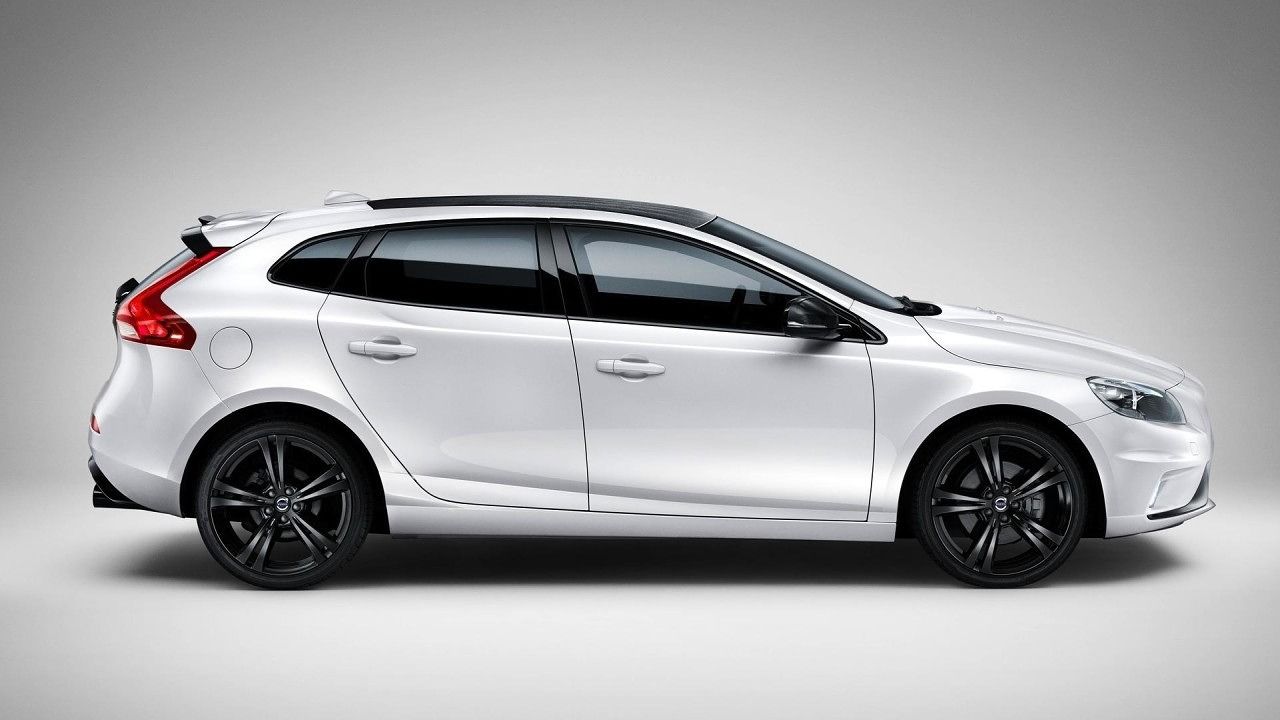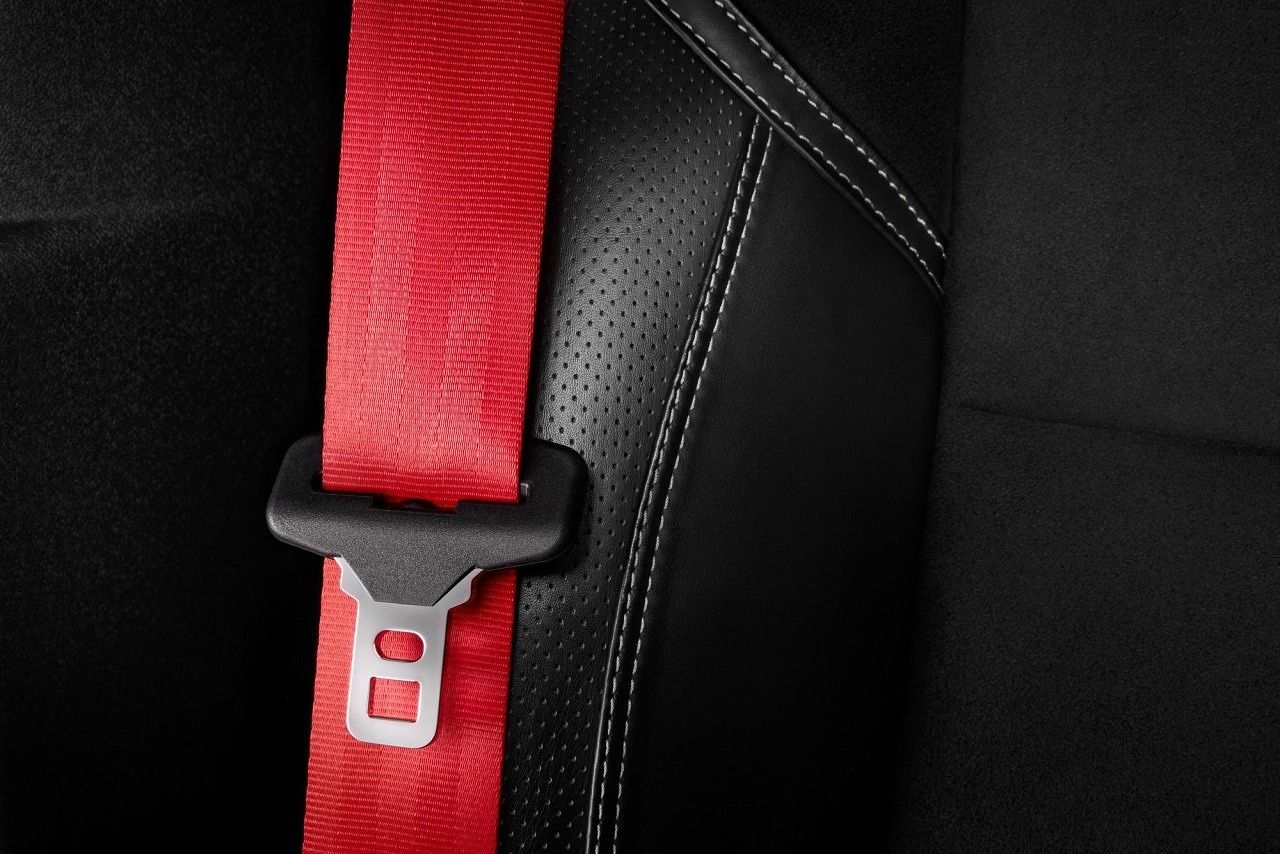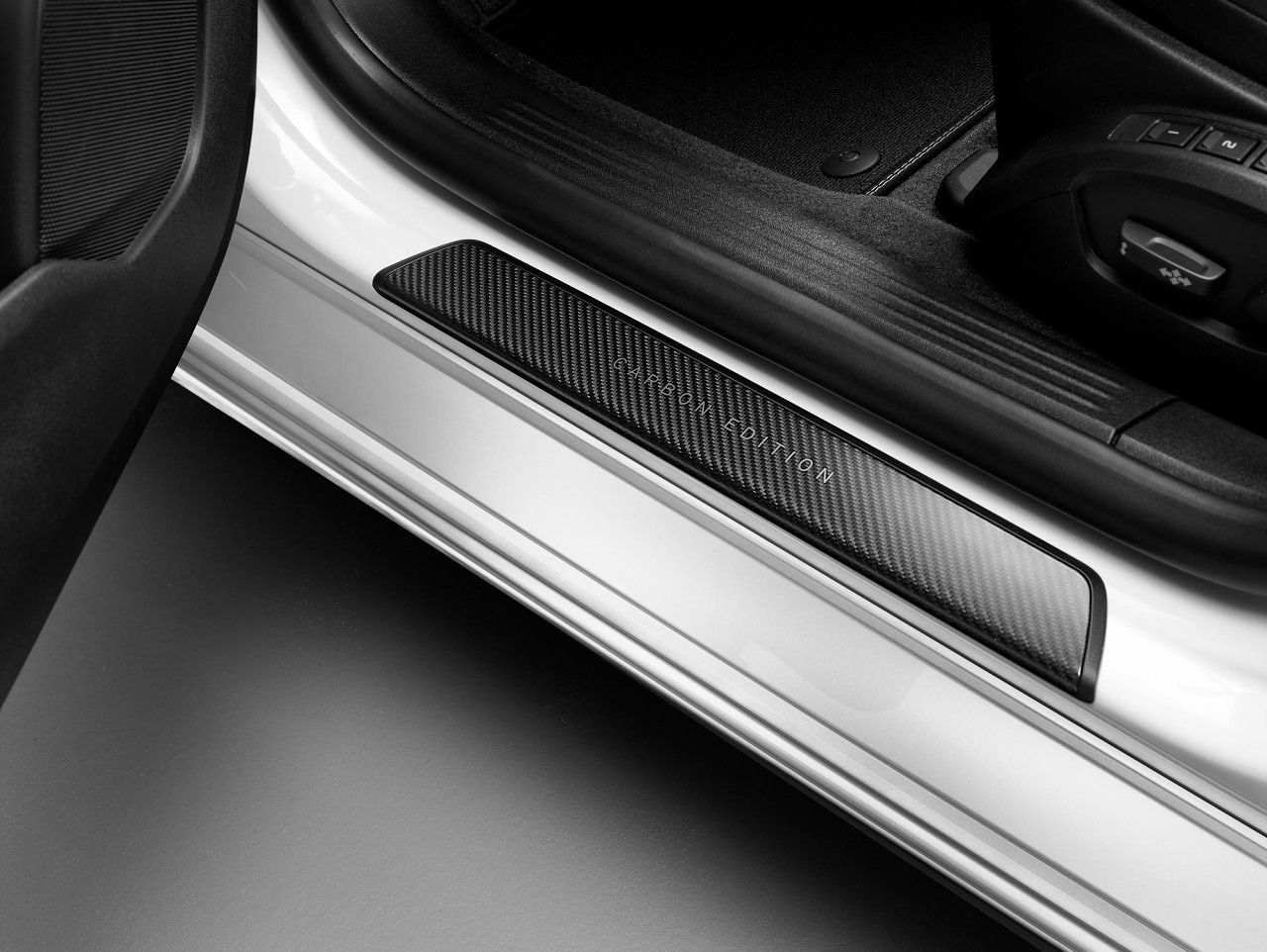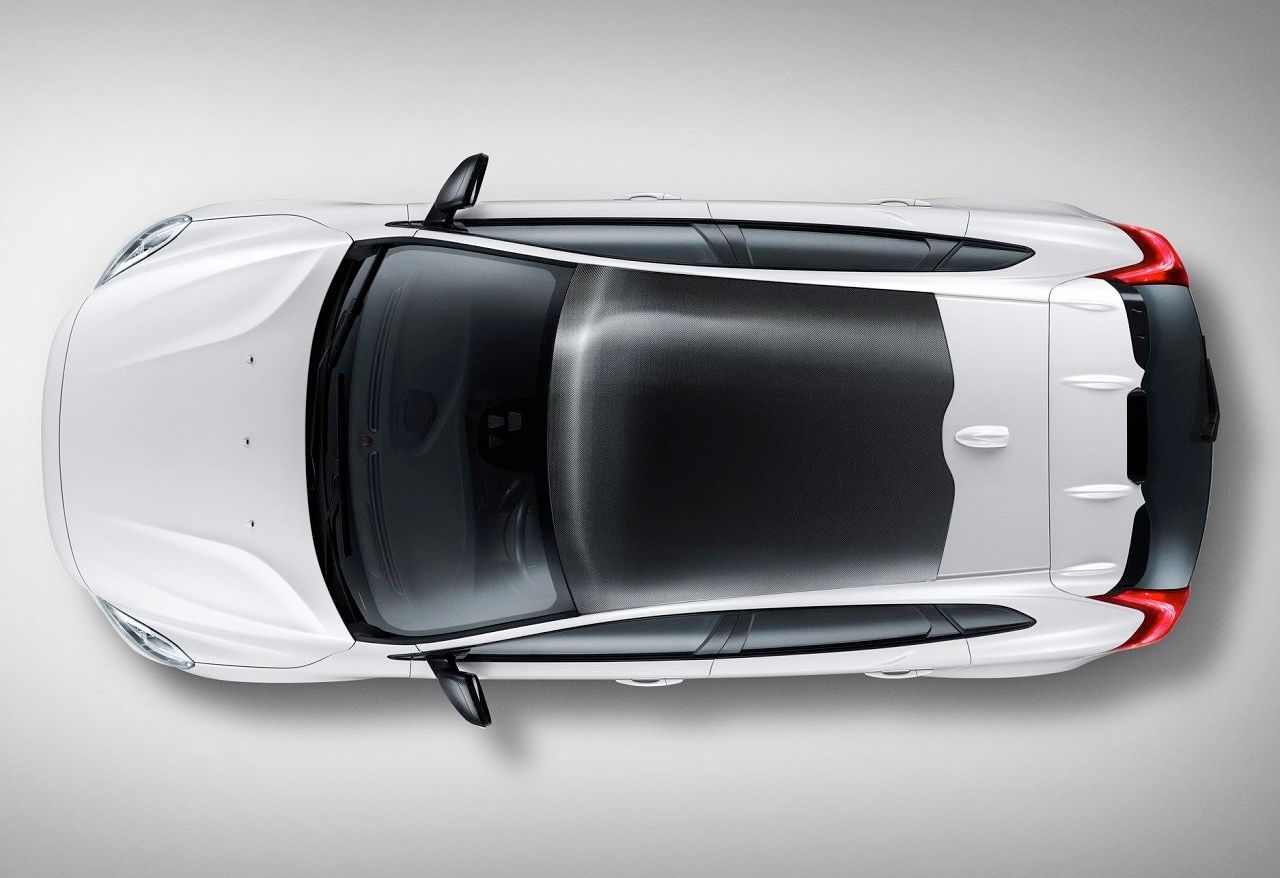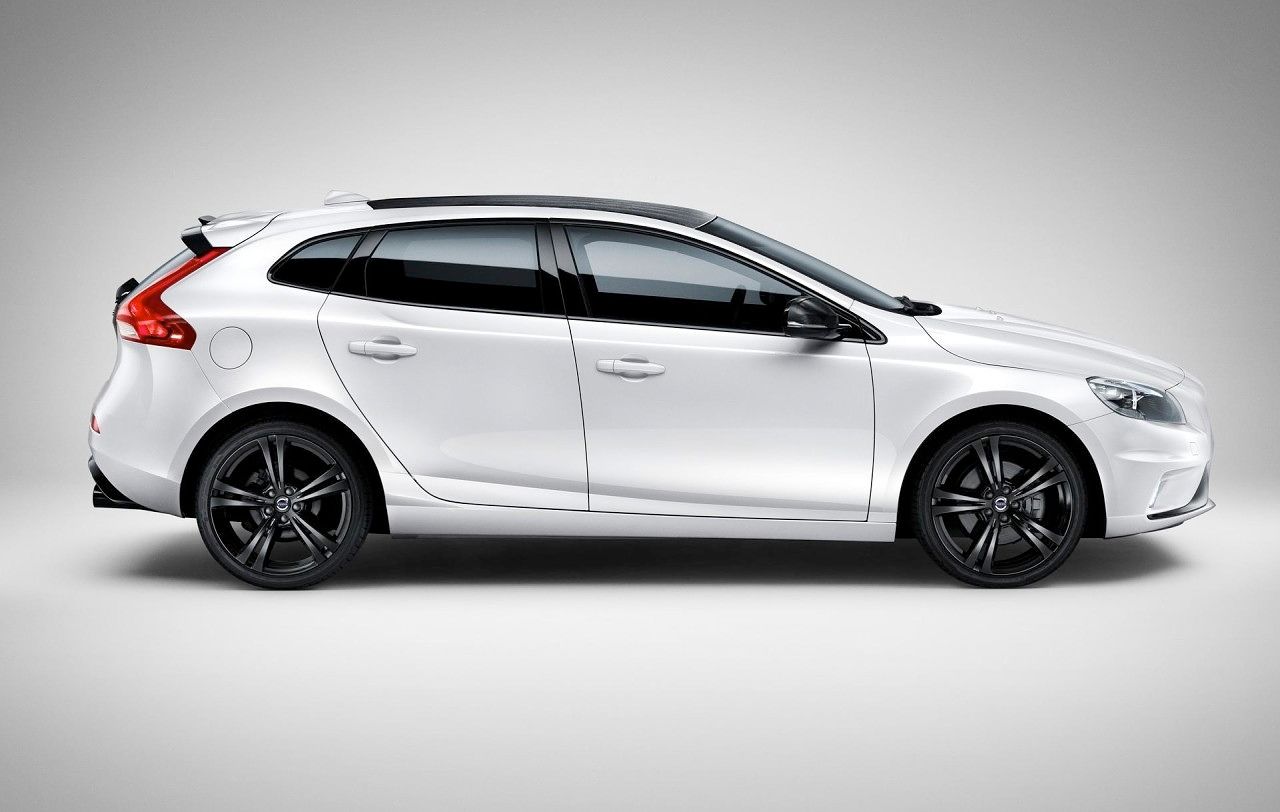When talking about Volvo->ke188 cars, performance isn't the first thing that comes to mind. Rather, Volvos are better known for their safety and excellent fuel economy. However, those looking to buy a car that's a bit quicker than what Volvo usually has to offer can take it to Polestar, the brand's performance division. Mostly known for delivering products similar to BMW's->ke178 M Performance->ke546 and Mercedes'->ke187 AMG,->ke8 Polestar has just introduced the "Performance Optimisation" package, which focuses on exclusive visual updates and mild performance enhancements. The first Volvo to receive the new package is the V40->ke4155 hatchback.->ke304
Dubbed V40 Carbon, the five-door hatch features a bespoke exterior and interior and comes with a choice of two engines, gasoline and diesel. The good news is that both powerplants crank out more horsepower than their standard siblings, essentially bridging the gap between the regular V40 and the full-fledged Polestar edition.
More good news comes from the fact that the Swedes are planning to optimize other Drive-E engines as well later in 2015, meaning more vehicles are set to receive Polestar's new package. Meanwhile, let's have a closer look at the V40 Carbon below.
Continue reading to learn more about the Volvo V40 Carbon.
volvo-v40-carbon
- Make: Array
- Model: volvo-v40-carbon
2015 Volvo V40 Carbon
- Make: Array
- Model: 2015 Volvo V40 Carbon
- Horsepower: 249
- Torque: 294
- [do not use] Vehicle Model: Array
Exterior
The V40 Carbon's exterior is far from radical, but customers will receive a hatchback that will stand out in a pack of standard V40s. Although Volvo released very little info and only a couple of photos of the car, I've identified three bespoke features on the Carbon hatch. A significant portion of the roof comes in carbon-fiber, while the standard wheels are replaced by a set of exclusive, 19-inch, five-spoke rims finished in black. Both the side mirrors and the window trim are painted black for a strong contrast with the car's white paint job.
There's no word on what other exterior colors will be available, but my guess is there will be more than just the pearl white shown here. A black paint option would turn the V40 Carbon in a menacing all-black hatch even Darth Vader would drool on. Likewise, Polestar's signature Rebel Blue would be a cool idea as well, though it might not happen on a car like this.
Interior
Volvo didn't speak much of the Carbon's interior either, but the press release tells us the two main novelties customers should expect once inside the cabin. Opening the front doors will reveal a couple of very cool carbon-fiber sill plates, while the front seats get red seat belts. Granted, flashier seat belts won't make the car run faster, but they do add a touch of sportiness to the otherwise black interior. Volvo also mentions other "carbon details," but provides no actual facts.
Drivetrain
Note: Regular Volvo V40 engine pictured.
The V40 Carbon can be had with either the T5 gasoline engine or the D4 diesel, both having received significant bumps in power and torque. The T5 now cranks out 253 horsepower and 295 pound-feet of torque, while the D4 generates 200 horses and a whopping 326 pound-feet of twist. That's an improvement of 25 horsepower and 37 pound-feet for the gasoline mill and 16 horses and 30 pound-feet for the oil burner. While the T5 only mates to an eight-speed automatic, the D4 can also be had with a six-speed manual transmission.
Polestar also focused on improving throttle response, gearshift speed, gearshift precision and hold, and off-throttle response. There's no word how these improvements and the added power impact the V40's performance specs, but they should shave at least a tenth second off the 0-to-60 mph sprints. Expect the T5 to hit 60 mph in around 6.5 seconds and the D4 to achieve the same benchmark in around 7.1 seconds.
Drivetrain Specifications
|
Type |
T5 |
D4 |
|
Output |
249 HP (+24 HP) |
197 HP (+14 HP) |
|
Torque |
294 LB-FT (+36 LB-FT) |
324 LB-FT (+29 LB-FT) |
Prices
Volvo has yet to release pricing information for the V40 Carbon, but it did mention production will be limited to only 343 units, which is good news as far as exclusivity goes. Unfortunately, since the V40 isn't available in the United States, neither will the V40 Carbon. In fact, Volvo will only sell it in Finland, France, Japan, the Netherlands and Sweden.
Competition
Volkswagen Golf GTi / Golf GTD
Arguably the most popular nameplate in this niche, the Golf->ke164 comes in various body styles and with an array of engines. The GTi->ke223 is right up the V40 T5's alley with its turbocharged, 2.0-liter, four-cylinder rated at 217 horsepower and 258 pound-feet of torque in Europe. Despite being less powerful than the Volvo, the GTi is actually quicker from 0 to 60 mph, needing 6.4 seconds to hit that speed.
Then there's the GTD, the GTi's diesel-powered equivalent and the perfect alternative to the V40 D4. This hatch comes with a 2.0-liter turbodiesel under the hood and 184 horses and 280 pound-feet of torque to the wheels. The 0-to-60 mph sprints takes around 7.3 seconds, which makes it a tad slower than the Volvo.
Of course, none of these hatches can be had with some sort of carbon-fiber package, but Volkswagen does provide plenty of customization options. Of the two, only the Golf GTi is available Stateside.
Find out more aobut the Golf GTi in our full review here.
Conclusion
Despite featuring loads of safety features and an impressive lineup of engines, now significantly more fuel efficient than of its competitors, the Volvo V40 remains one of the least popular compact hatchbacks out there. Granted, the Carbon edition won't change that, but it will provide Volvo customers access to a more exclusive model. Exclusivity is a key factor in today's market and Volvo seems determined to catch up with more popular rivals in just about any segment it competes in. The V40 Carbon is a great start for a new line of cars set to arrive in showrooms by the end of 2015.

